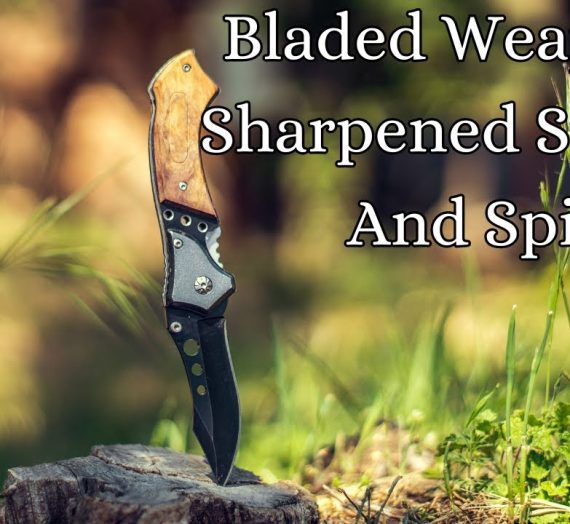What is the safest place for your character to hide from a tornado? What should your character never do in a tornado warning? What does it mean if a tornado looks like it is not moving? What did my dog do when I was hit with a tornado? Find out on this episode!
Welcome back to the three-part series on tornados. Last week was Tornado Weather 101. It covered how tornados form, the signs of a potential tornado, and the destruction they can cause. This week is Inside a Tornado (Survival). Next week is Tornado Triage and First Aid.
Let’s start with the great news! With a few precautions, even the most violent tornados have a 99% survival rate, according to the National Oceanic and Atmospheric Administration.
Tornados are a part of life for many people, and any character in a tornado-prone area should have a tornado plan.
The first thing would be to have a safe place picked out where your character can take shelter. If writing modern or post-apocalyptic, storm shelters, sometimes called storm cellars or safe rooms, would be the best option. They were originally underground shelters, but in modern times, we have aboveground shelters that were first made to accommodate those with disabilities.
There are upsides and downsides to both above and below-ground storm shelters. Above-ground shelters are easier for people with disabilities to access, and frankly, it is quicker to get into most times as they can be attached to the home. They are less likely to flood and usually cost less to install. The downsides are that they are not as flexible in sizes, and they might not fit all the people who live in the home inside, leaving some of the characters without shelter. It’s never a situation anyone wants to be in, but it would make an interesting plot line. The other big downside is that not all aboveground shelters are rated for high winds. Yes, some can be, but not all are, and being tossed around inside a shelter, as it is tossed by a tornado, sounds painful, if not life-threatening!
Below-ground shelters are the safest in higher wind situations or even high-risk areas. They can be small or large enough to fit a huge family if your characters decided to have babies like rabbits. They can be added to garages, backyards, or driveways. The downside is that they cost more, which is a huge obstacle for most of us here in Tornado Alley. It can also be hard to install in some places. We own some land with more rocks than anything, and digging a place deep enough to install it would be hard. They can be more difficult for people with disabilities to use. They can flood, and when you don’t have a pump, you have to get it out one bucket at a time. And yes, I know from experience. It was my summer chore once. Ok, punishment, but you didn’t hear that here. However, the biggest concern with this is that it takes extra time to leave the home and run to the shelter. Tornados can happen with little warning, and seconds can be the difference between life and death.
There are modern-day community storm shelters throughout Tornado Alley. Many times, when tornado watches are issued, people who do not have their own shelters or live in mobile homes, their cars, or the homeless will stay in these shelters until the tornado watch is over. This could be a few hours or even a few days, although watches rarely last more than overnight.
Storm shelters are common in Tornado Alley. They were first invented in the early 1900s. Originally, they were more of a cave, but later on, doors were attached. While they are common in modern times, it is just as common for a home not to have a storm shelter.
In 1999, Moore, Oklahoma, was hit with a tornado, and several of the residents were trapped for a time in storm shelters, prompting storm shelter registration with the local fire departments. This was optional. When the town was again hit in 2013, there were calls to make storm shelter registration mandatory. However, as of today, I do not know any place where registration is mandatory; it is highly encouraged.
Historically and in modern times, root cellars are used as a storm shelter. However, they do not have the reinforced doors that modern storm shelters do, and if people are not far enough in the storm shelter, they risk being sucked out.
Caves have been used for as long as there is known history as a way to survive tornados. This does work; however, if your character didn’t get far enough or far enough fast enough, there is a chance they could be sucked out of the cave.
The advice given out is if a person is trapped outside with a tornado is to find a ditch or the lowest lying area and do a whole lot of praying. There was a time in my pre-teen years when my father stayed in a trailer, also called a mobile home. His advice was if a tornado were to come, to run to the ditch and take cover there. Like every logical child, I had to ask what to do if it got to me before I made it to the ditch. He said to hug the ground REALLY tight.
Other things some people do are seek shelter inside cast iron bathtubs, place mattresses on top of themselves, sit in closets and hallways, and many play card games or game-type activities with children to make it more fun and less scary.
In modern times, when tornado warnings come out, they will give instructions on what the National Weather Service deems the safest thing to do. They give the following warning. “A tornado has been sighted or indicated by weather radar. There is imminent danger to life and property,” the National Weather Service says. “A tornado has been indicated in your immediate area. Move to an interior room on the lowest floor of a sturdy building. Avoid windows. If in a mobile home, a vehicle, or outdoors, move to the closest substantial shelter and protect yourself from flying debris.”
Modern warnings for tornados have an average lead length of 13 minutes. That means, in theory, you have 13 minutes to take shelter. In reality, what is an average includes long-lived tornados, while most are only on the ground for a few minutes, and there is not a lot of warning. That is why every second is precious. Efforts are always being made to make the warning time longer to give people as much time as possible to take shelter.
Other aspects of a tornado plan are to get pets or even livestock to safety. This will depend on the timeframe of your story. Maybe they take a pet dog or cat with them to a storm shelter. If writing historical, a farmer might try to save a horse by letting it out to pasture so it can find shelter because if the horse dies, they can’t plow the field. That means they will not have enough to eat to survive the winter.
Other parts of a tornado plan are to have food and water in a storm shelter in case you are trapped inside it for a period of time. Having someone to check on your character and their storm shelter is important. Family, friends, and neighbors are the most likely choice of people to check on each other.
One last thing is to think about a family plan. What happens if your character is not with their family when a tornado strikes. Do they have a way to reach each other? Maybe they have a safe place to meet. They could go to the neighbor’s house to meet, assuming that it was not also hit.
Many people would immediately take shelter if they even thought a tornado was close. Other people want to see it with their own eyes. Can I say my dad again in this episode because this sounds like him? Some will only take shelter if it is moving toward them. However, only about half of them know that if a tornado looks like it is not moving, it means it is moving toward you. This could catch your character off guard.
While we are speaking of things that should not be dones, your character should not try to outrun a tornado. It sounds good in theory, but tornados can move faster than cars at highway speeds or even faster. However, if I was in my car, I might use it to get me to the safest building to take shelter inside as fast as I could. Yes, I have had to do that with kids before, and it is as heart-pounding as it sounds.
Also, parking cars under underpasses or bridges is a bad idea. While it sounds good in theory, it actually makes a wind tunnel under the bridge that is likely to suck the car out with your character inside. Some people advise using the beams of an underpass as a shelter. Others say to never use it. I’ve heard survival stories of this, and I have heard of others who died because of this. Keep that in mind if your character tries it. They have a 50/50 shot at survival, but if there is no other option, or maybe a homeless character was already there, that might be the only chance they have.
Now, let’s go over a few things leading up to a tornado. Your character might have seen a supercell or even the green sky I talked about in the last episode. They potentially see a tornado coming also. In modern times, there are tornado warnings from tornado sirens. The Emergency Broadcasting System will break through every TV, radio, specialized weather channel, and any other type of broadcasting, along with a form of reverse 911 if a person is signed up for it.
Outside of these well-known things, many times in the hours or sometimes days leading up to a tornado, the air is extremely humid. There can be a calm for moments, or even minutes, before a tornado hits, though I can tell you from experience it doesn’t always happen. Strong gusts of wind that bow trees over, so large trees are bent in half, and saplings can bend to the ground. Field grass that can be over six feet high will flat ten the direction the wind is going. Sometimes, trees or grass seem to be bowed in more than one direction because the wind is twisting and not going all one direction. This is a big sign right before the touchdown. The wind will sound like a roaring waterfall. Some people say it sounds like a freight train. There can also be a whistling sound.
Most people instinctively know something is not right, and their adrenaline will spike in the minutes leading up to a tornado. This is also true for animals. Birds might fly off in flocks, even if they are not the same bird. Hawks might fly off with sparrows to get to a safe place. Cattle can get restless and even stampede. Pets can hide or run around. Our farm dog ran off and hid during our tornado. He came back about an hour later.
Now, if you are hit with a tornado, everyone here in Tornado Alley knows what is called the tornado position. Schoolkids practice this from the beginning of school until the day they leave. It is just as practiced as a fire drill. Basically, your character kneels along an interior wall of a home, school, shelter, or wherever you are. You place your face between your knees and interlock your fingers behind your neck to protect your neck from injuries. It is not a hard pose. Parents, however, often kneel down, place young children on their legs, and use their own bodies to shield their children. I’m not on the depression train, so you can look up the miracle stories of that and the tragedy stories if you want. I don’t.
As a tornado is happening, it will be loud. If the tornado is small, then mobile homes could be knocked over, but most other houses will have some roof damage and possible window damage. Tornados can do odd things and take a roof but leave the windows or skip and take out every other home. It can just flat-out be unpredictable.
Other things are that there will be a ton of dust, dirt, pollen, and potentially asbestos if there are old homes, and it will get all over everything. If your character is outside or their house is severely damaged, they could have breathing problems for hours or days. These can even lead to infections over the next few days. Modern and post- apocalyptic stories will also have the potential of having chemicals in the air. Maybe a factory got hit, or just a gas station. There is no telling what could be in the air.
Also, all that dust, dirt, pollen, and debris make tornados very dark if you are inside of one.
These can also affect the eyes and the ears. Your character might not even be able to see right away or ever again. I was involved in disaster relief when the 2011 tornado outbreak happened. One of the things I remember hearing was that when an EF5 tornado hit, a young man had a family member check on them. He didn’t even recognize them at first because they were covered in so much dirt, someone that he had known and been close to all his life.
Out of that same tornado was a story about the eye of the tornado. I have to admit, being hit with two sides of a tornado was something I, through Hollywood, made up with the Twister movie. Turns out, I was wrong. If you happen to be in the eye of the tornado, you can be hit with both sides. That said, an EF5 tornado is over a mile wide, and you would have to be in a small area to have a chance of that happening. So it is unlikely that would happen, but it is possible.
As a tornado winds down, people are hesitant to leave safety quickly. The wind can still be strong in the minutes after a tornado passes, and it is likely to start raining heavily, giving the impression it is not yet safe.
However, if they are trapped under debris, or something of that nature, your character might not be able to leave right away.
Many people are injured in tornados. This is most often by being hit with flying derbies, but they can be stabbed with it or crushed if a wall comes down on them. More about the injuries next week.
Fun fact: The longest record of anyone surviving being picked up and thrown by a tornado is from 2006 in Missouri, USA. A Matt Suter was inside a mobile home when the tornado hit. He was knocked unconscious, and when he woke he was 1,307 ft or 398 m away in a field, with only minor injuries.
What could possibly go wrong?
Likely to go wrong: Your character’s home has no interior rooms, and the windows are shattered when the tornado comes through, cutting your character.
Likely to go wrong: Your character is pelted with hail as they make a run for their underground tornado shelter.
Possible to go wrong: Your character uses a root cellar to shelter a tornado, and the door is ripped off. This could suck your character out of the cellar and into the tornado.
Possible to go wrong: Your character tries to outrun a tornado and quickly realizes it is moving faster than they are. They will need to take shelter, or this could be deadly.
Unlikely to go wrong: Your character is trapped inside their storm shelter by debris from the tornado.
Unlikely to go wrong: Your character becomes trapped under a tree after a tornado while they are out hunting. This could be a race against the clock to find them.
Improbable, but still technically in the realm of possibilities: Your character could be sucked out of a car and thrown. This is not as common as the movies make it out to be, but it does happen.
Improbable, but still technically in the realm of possibilities: Your character is trying to calm their cattle and is trapped or trampled in a stampede because the cattle are frightened. This would be even worse if they make it home to find the tornado demolished their home.
Helpful links to learn more:
Storm Shelters:
https://www.angi.com/articles/best-storm-shelters.htm
What to do if there is a tornado:
https://www.weather.gov/safety/tornado-during
Survival after being thrown:




